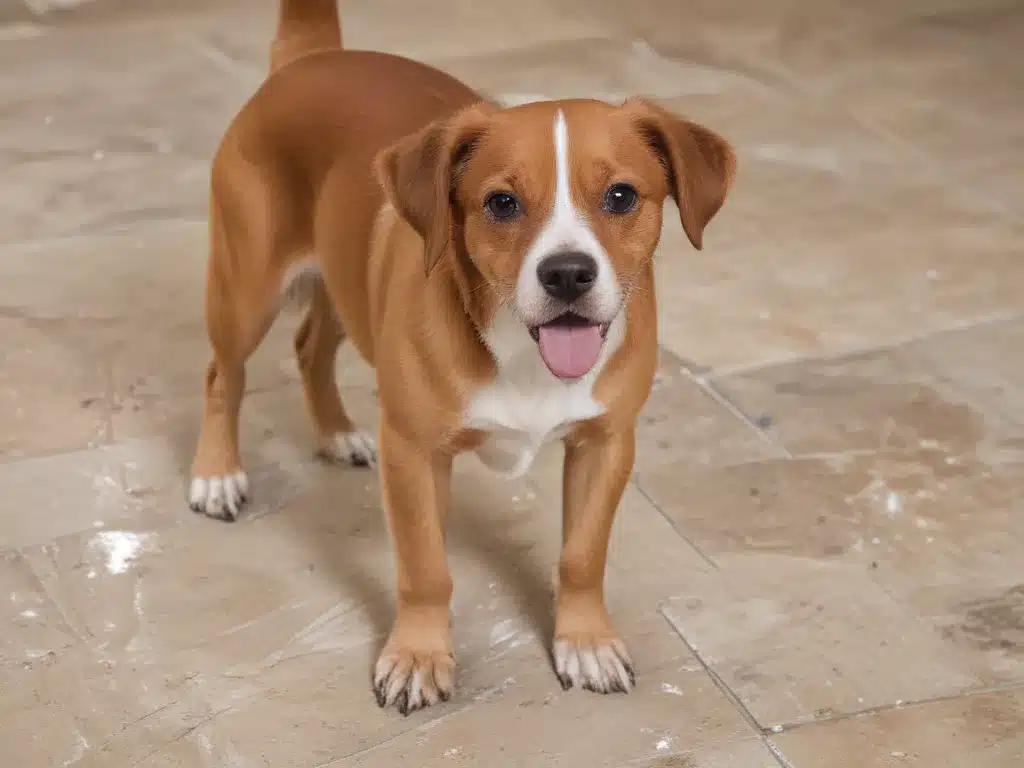Introduction
As a pet owner, I understand the challenges that come with dealing with pet accidents, especially when it comes to old urine stains on subflooring. These stains can be stubborn and difficult to remove, and if left untreated, they can lead to unpleasant odors and even damage to the flooring. In this article, I will provide you with a comprehensive guide on how to effectively clean old pet urine stains out of subflooring.
Understanding Pet Urine Stains
Before we dive into the cleaning process, it’s essential to understand the nature of pet urine stains. Urine contains various compounds, including uric acid, ammonia, and other organic compounds. When these compounds seep into the subflooring, they can cause discoloration, odor, and potentially even structural damage if left untreated.
The age of the stain also plays a crucial role in determining the difficulty of removal. Fresh urine stains are generally easier to clean than old, set-in stains. Over time, the urine compounds can react with the materials in the subflooring, making them more challenging to remove.
Preparing for the Cleaning Process
To effectively clean old pet urine stains from subflooring, you will need to gather the following supplies:
- Protective gear (gloves, goggles, and a face mask)
- Absorbent materials (paper towels, rags, or cat litter)
- Enzymatic cleaner (specifically designed for pet urine)
- Baking soda
- White vinegar
- Hydrogen peroxide (3% solution)
- Odor eliminator (optional)
- Scrub brush or sponge
- Fan or dehumidifier (for drying)
Before starting the cleaning process, it’s essential to remove any existing flooring or carpeting to expose the affected subflooring area. This will ensure that you can access and treat the stain effectively.
Step-by-Step Cleaning Process
- Absorb the Excess
- If the urine stain is still damp or wet, start by absorbing as much of the excess liquid as possible using paper towels, rags, or cat litter.
-
Apply pressure to the area to help draw out the urine from the subflooring.
-
Apply an Enzymatic Cleaner
- Enzymatic cleaners are specifically designed to break down the organic compounds found in pet urine, making them an effective solution for removing old stains.
- Follow the manufacturer’s instructions for dilution and application.
-
Saturate the affected area with the enzymatic cleaner and allow it to sit for the recommended amount of time.
-
Scrub the Area
- Using a scrub brush or sponge, vigorously scrub the stained area to help agitate and lift the stain from the subflooring.
-
Pay special attention to any stubborn or heavily soiled areas.
-
Rinse and Blot
- After scrubbing, rinse the area thoroughly with clean water to remove any remaining cleaner and urine residue.
-
Use absorbent materials to blot the area dry, applying pressure to help draw out any remaining moisture.
-
Apply a Baking Soda and Vinegar Solution
- In a spray bottle, mix equal parts of baking soda and white vinegar with water to create a cleaning solution.
- Spray the solution onto the affected area and allow it to sit for several minutes.
-
The combination of baking soda and vinegar will help neutralize any remaining odors and break down stubborn stains.
-
Scrub and Rinse Again
- Scrub the area once more with a brush or sponge to agitate the solution and lift any remaining stains.
-
Rinse the area thoroughly with clean water and blot dry.
-
Apply Hydrogen Peroxide (Optional)
- If the stain is particularly stubborn or has set deep into the subflooring, you can try applying a 3% hydrogen peroxide solution.
- Spray or pour the hydrogen peroxide onto the stained area and allow it to sit for several minutes.
-
The oxidizing properties of hydrogen peroxide can help break down organic compounds and lift stubborn stains.
-
Rinse and Dry
- After the final treatment, rinse the area thoroughly with clean water to remove any remaining cleaning solutions or residue.
-
Use a fan or dehumidifier to help speed up the drying process and prevent any moisture buildup, which could lead to mold or mildew growth.
-
Apply an Odor Eliminator (Optional)
- If any lingering odors remain after the cleaning process, consider using an odor eliminator specifically designed for pet urine.
- Follow the manufacturer’s instructions for application and allow the product to work its magic.
Maintenance and Prevention
To maintain the cleanliness of your subflooring and prevent future pet urine stains, consider the following tips:
- Regular Cleaning: Establish a routine for cleaning and inspecting your subflooring, paying close attention to areas where your pets frequent.
- Enzyme Cleaners: Keep enzymatic cleaners on hand and use them promptly to treat any new pet accidents or stains.
- Pet Training: Invest time and effort in properly training your pets to reduce the likelihood of accidents occurring in the first place.
- Flooring Protection: Consider using waterproof or moisture-resistant subflooring materials in areas prone to pet accidents, as they can be easier to clean and maintain.
By following these steps and incorporating regular maintenance practices, you can effectively tackle old pet urine stains on your subflooring and maintain a fresh, odor-free living environment for you and your furry companions.







